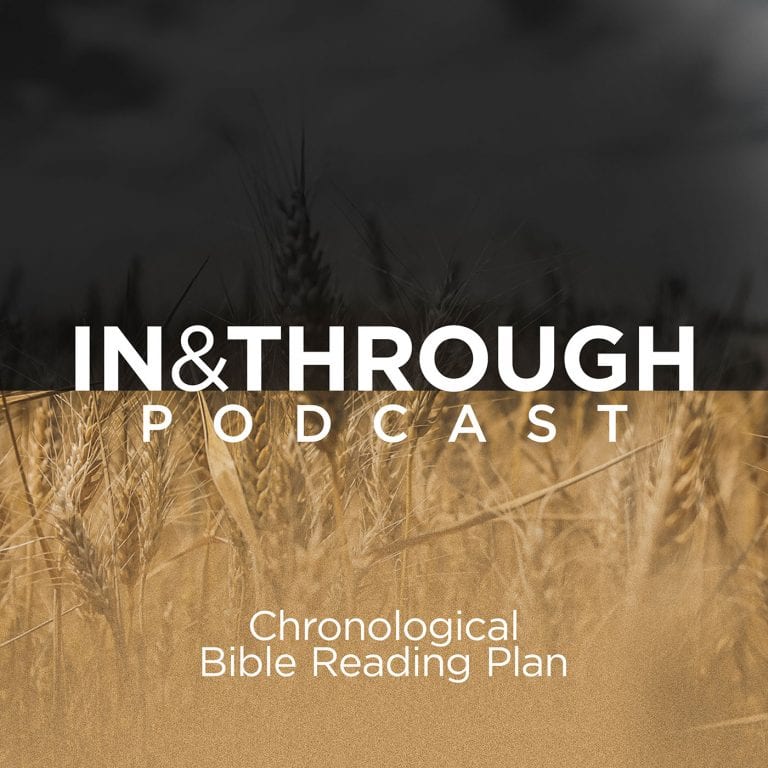As we come to and through another Easter season, our thoughts naturally turn to those epic events of Christ’s passion week: his triumphal entry, his last days of teaching, the last supper, his betrayal, his unjust trial, his crucifixion, his burial, and his resurrection. Many churches make a great effort to take their congregations through the drama of that cosmically significant week (despite what some Roman Catholics on Twitter seem to think).
Now look back to the list of events in the previous paragraph and see if you can find what is missing. Did I forget any major events? At least one evangelical theologian says yes. He makes the case that most of us skip over the events of what has historically been referred to as Holy Saturday: that full day where Jesus laid in the tomb between his death on Friday and his glorious resurrection on Sunday morning.
But many of us haven’t given that in-between day much of any thought. I know I didn’t. So just what exactly happened on Saturday? Does the Bible even talk about it? We’re all familiar with the Apostles’ Creed. It summarizes the Easter weekend with these unforgettable words:
He suffered under Pontius Pilate,
was crucified, died, and was buried;
he descended to hell.
The third day he rose again from the dead.
All Christians have heard or repeated those words: “He descended to the dead” or, “He descended into hell.” But what does that really mean? How and why would Christ go to hell? Enter Matthew Y. Emerson’s helpful book: ‘He Descended to the Dead: An Evangelical Theology of Holy Saturday.’
What is Holy Saturday?
Dr. Emerson has written this book in order to metaphorically hold the hands of confused evangelicals and introduce them to this classic doctrine of the ‘descent.’ So what is the argument of the book, in a nutshell? Emerson summarizes this doctrine as so:
“… the confession that Christ ‘descended to the dead’ can be summarized like this:
Christ, in remaining dead for three days, experienced death as all humans do: his body remained in the grave, and his soul remained in the place of the righteous dead. He did not suffer there, but, remaining the incarnate Son, proclaimed the victory procured by his penal substitutionary death to all those in the place of the dead – fallen angels, the unrighteous dead, and the [Old Testament] saints. Christ’s descent is thus primarily the beginning of his exaltation, not a continuation of his humiliation.”[1]
 Each element in the description above is dealt with in significant detail in the book. The ones that probably offer the most confusion for evangelicals are 1) the idea of “the place of the righteous dead” and 2) the proclamation of victory “to all those in the place of the dead – fallen angels, the unrighteous dead, and the [Old Testament] saints.” Let’s take each in turn.
Each element in the description above is dealt with in significant detail in the book. The ones that probably offer the most confusion for evangelicals are 1) the idea of “the place of the righteous dead” and 2) the proclamation of victory “to all those in the place of the dead – fallen angels, the unrighteous dead, and the [Old Testament] saints.” Let’s take each in turn.
Sheol – The Place of the Dead
Emerson spends time unpacking the Ancient Near Eastern as well as Greco-Roman views of the underworld where the souls of the deceased went after death. The idea of such a place is certainly present in the Old Testament, even if we don’t always know what to do with it. The standard fare in evangelical churches is a binary understanding of the afterlife: there is heaven and there is hell. But a closer reading of the Biblical evidence actually points us towards a more nuanced view.
To put it simply, the Bible seems to teach that before the resurrection of Christ, everyone who died ended up in the place of the dead, also known as Sheol, or Hades. Within this place were different sections, or tiers. The first, and highest, was the place of the righteous dead, sometimes called paradise, or Abraham’s bosom. Next was the place of the unrighteous dead, also referred to as Sheol or Hades, as well as Gehenna. Lastly was Tartarus, or the Abyss, a kind of prison for fallen angels. This, as strange as it may seem to us, was the general framework assumed by the audience in Jesus’s day.
This framework also helps us understand certain things that otherwise would not make much sense, such as the parable of the rich man and Lazarus in Luke 16:19-31. We are now better placed to consider the purported events of Holy Saturday.
The Proclamation of Victory and the Triumphal Procession
While the New Testament is not as clear on the events of Holy Saturday as we might wish, Emerson argues that once the modern reader understands the cosmological framework assumed by the New Testament writers, the picture becomes far clearer.
We have the claim in 1 Peter 3:19-20 that Christ “went and proclaimed to the spirits in prison, because they formerly did not obey, when God’s patience waited in the days of Noah,” as well as that enigmatic passage in Ephesians 4 about Christ having “ascended” and “also descended into the lower regions, the earth.” And Christ himself says in Revelation 1:18, “I died, and behold I am alive forevermore, and I have the keys of Death and Hades.” Once you start seeing it, suddenly it’s everywhere. Other relevant passages are Phil. 2:10; Romans 10:6-7; and 1 Peter 4:6, each of which are treated in detail in the book.
So how can we summarize what seems to have occurred on Holy Saturday during the descent? Christ proclaimed the victory of the cross to all those found in the place of the dead: the Old Testament saints, the unrighteous dead, and fallen angels. He then gathered the righteous dead and led them in triumphal procession out of Sheol and into the presence of God in heaven.
Emerson explains: “Christ ‘releases’ the OT saints, by which we mean simply that, rather than dwelling in Abraham’s bosom (or paradise) awaiting the Messiah, they now dwell in the presence of the risen Christ.” This is why the Old and New Testaments seem to speak differently about where departed saints go—because everything changed after Christ harrowed hell on Holy Saturday and took his own to be with him and the Father in heaven. This adds a layer of depth and richness to Easter weekend that I had never seen before.
Let’s consider one more piece of evidence from Acts 2:24-28, which quotes Psalm 16:8-11 and reads as follows:
God raised him up, loosing the pangs of death, because it was not possible for him to be held by it. For David says concerning him, ‘I saw the Lord always before me, for he is at my right hand that I may not be shaken; therefore my heart was glad, and my tongue rejoiced; my flesh also will dwell in hope. For you will not abandon my soul to Hades, or let your Holy One see corruption. You have made known to me the paths of life; you will make me full of gladness with your presence.’
The apostle Peter goes on to make it explicit that king David “died and was buried, and his tomb is with us to this day” (v29). He then claims that David “foresaw and spoke about the resurrection of the Christ, that he was not abandoned to Hades, nor did his flesh see corruption” (v31 – emphasis mine). In other words, king David was among those whom Christ brought out of Abraham’s bosom (located in Hades) on that unforgettable Saturday.
Metaphysical Discomfort
One of the interesting aspects of this doctrine is the metaphysical discomfort it brings. It’s one thing to believe in a far-away heavenly realm. But it smacks of an embarrassing medieval credulity to say that Jesus descended through the earth to the realm of the dead, wherever that is. This embarrassment is in part due to the stranglehold that modernity has had on even faithful evangelical theology for the last hundred years or more. Such is the incredible power of the dominant materialistic assumptions that underpin our age. This is what I meant by metaphysical discomfort. This doctrine of the descent of Christ on Holy Saturday means agreeing more with the ancient Greeks and Israelites about the existence of Hades or Sheol than with the respectable materialist metaphysics of modernity.
But this so-called respectability is really a house of cards, a mirage, like the ethos of ‘cool’ that hung around certain people in high school. It’s not worth fighting for because it is built on a foundation of weaponized doubt and unbelief.
Closing Thoughts
I found Emerson’s book compelling, fascinating, and edifying—especially the first three or four chapters, which form the heart of the biblical and historical argument. The book certainly gets technical at times, but the author consistently returns to the practical implications both personal and corporate of the truths he deals with.
This is how Emerson states his hope for the book: “My goal… is simple: to recover the doctrine of the descent for evangelicals today.” I think he is successful in that regard. In most cases, evangelicals have no real argument against the doctrine except for the intuitive metaphysical discomfort that it brings. It’s not like there is some other firmly held belief that Jesus spent Holy Saturday doing anything else. There is simply nothing there at all. We don’t have a theology of the descent; and we don’t know what to do with it. We usually just avoid it and gloss over the passages that deal with it.
The book therefore serves to cure our ignorance historically, Biblically, and theologically. There are riches and truths to gain and grow from here that we ought not miss out on any longer. And as for that temptation to feel even a little bit embarrassed about believing such a thing? Let it go. I was embarrassed of my parents in high school, but it was I who was wrong. I had breathed that nauseous atmosphere too deeply and it had distorted my view of reality. Likewise, we’ve been living with a truncated and distorted materialistic worldview for far too long already.
I hope you’ll spend some time with the Bible passages that have to do with Holy Saturday, a far too neglected aspect of Easter week. The disciples may have spent a miserable Saturday cowering and despairing, but just think of it: at that very moment the Son of God, truly dead in his humanity, was proclaiming his glorious victory to every conscious being who had ever lived and died, both friend and foe. He then broke down the gates of Hades and took all the saints with him into the heavens, including that thief on the cross he had so recently spoken to, “today you will be with me in paradise” (Luke 23:43).
[1] Page 103.
























